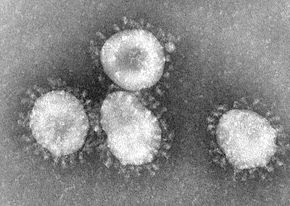The fact that animals possess the ability to spread and give diseases to humans is universally known; a general example being the transmission of HIV from non-human primates to humans, a virus which has now infected millions worldwide. In the past year it is believed that the outbreak of the recently discovered MERS disease, too has an, albeit unusual, animal origin. MERS (Middle Eastern Respiratory Syndrome) was first detected in September of 2012, yet only in the past months have researchers been able to suggest that the source of this new virus is in fact camels.
Despite its recent appearance, MERS has quickly become a global concern as the disease is seen to have a high mortality rate, where nearly 50% of all 150 infected individuals have died. MERS patients generally display symptoms of fever, coughing and shortness of breath, which eventually can progress to pneumonia and/or renal (kidney) failure. MERS is caused by a species of virus known as the coronavirus, a type of virus that was also responsible for the SARS (Severe Acute Respiratory Syndrome) outbreak nearly ten years ago, a disease which displays similar symptoms to the of MERS.
Researchers have been working tirelessly to gather more information on the source and viral characteristics of this potentially devastating disease, and their efforts have not been in vain. As August of this year, scientist were able to locate and isolate antibodies (proteins selectively produced by the body to remove the virus) in numerous camels within Oman region of Saudi Arabia. Despite this not being a definitive proof of that camels are the true source of the virus, it does strongly suggest the possibility that the virus was first infecting camels and then was passed to human in close proximity. Scientists have also been able to determine that the disease itself is relatively difficult to catch. The virus has very poor person-to-person transmission, which means as of present, we have little to fear of this disease becoming an epidemic. Still, health and government organizations should not dismiss the potential threat of MERS, as viruses such as these can mutate and gain the ability to spread easily throughout a population, much like the SARS outbreak seen 10 years earlier.
Natasha Smyrnis
References




